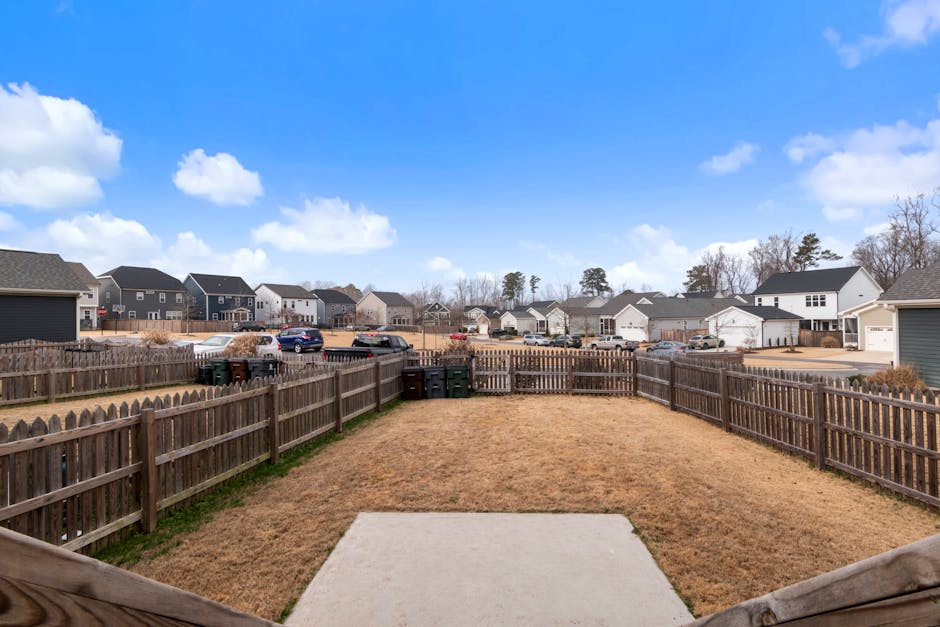
Living in a homeowners association (HOA) community comes with perks, like shared amenities and well-kept common areas. But it also means following the HOA’s rules, especially when it comes to outdoor projects. Many homeowners are surprised to learn that certain improvements or changes can lead to hefty fines if they’re not approved first. Knowing which outdoor projects can trigger fines in HOA communities is key to avoiding headaches and unexpected costs.
Rules can vary widely from one community to another, so it’s easy to make a mistake if you don’t read your HOA’s guidelines. Some projects that seem minor or routine might still require approval. If you’re planning to spruce up your yard, add a structure, or even change your landscaping, it’s worth checking before you start. Let’s take a closer look at six common outdoor projects that could land you a fine in an HOA community.
1. Installing Fences Without Approval
Fences may seem like a straightforward addition to your property. You want privacy, safety for kids or pets, or maybe a decorative touch. But in an HOA community, putting up a fence without approval can trigger fines quickly. Most associations have strict rules about fence height, materials, and even color. Some prohibit certain types altogether.
Before you dig a single post hole, review your HOA’s guidelines and submit a request for approval. The board may require specific plans or even a site inspection. Ignoring this process can result in not just fines, but also an order to remove the fence at your own expense. This makes fences one of the most common outdoor projects that can trigger fines in HOA communities.
2. Making Major Landscaping Changes
Refreshing your landscaping can boost curb appeal and property value. But in many HOA communities, big changes—like removing trees, planting hedges, or adding flower beds—require approval. The HOA might have rules about which plants are allowed, how tall shrubs can grow, and what types of mulch or rock you can use.
Even removing a dying tree without permission can lead to fines, especially if the tree was part of the original landscape plan. Always check the landscaping rules and, if unsure, ask for clarification. This helps you avoid penalties and keeps the neighborhood looking cohesive.
3. Building Sheds or Outbuildings
Need more storage or want a backyard workshop? Building a shed or any outbuilding is a classic example of outdoor projects that can trigger fines in HOA communities. Associations frequently regulate the size, location, color, and materials of these structures. Some may not permit them at all, or only in certain parts of your yard.
It’s tempting to assemble a prefabricated shed over a weekend, but skipping the approval process can be costly. Beyond fines, you might be forced to dismantle or relocate the building. Always submit detailed plans and wait for written approval before starting construction.
4. Adding or Expanding Driveways and Walkways
Expanding your driveway for extra parking or adding decorative walkways can seem harmless. But many HOAs set limits on hardscaping to control the neighborhood’s appearance and manage water runoff. Using the wrong materials or creating a larger paved area than allowed can result in fines.
Some associations also require specific setback distances from property lines or the street. Before pouring concrete or laying pavers, review the guidelines and get the necessary permissions. Even minor changes to your driveway can fall under outdoor projects that can trigger fines in HOA communities.
5. Installing Exterior Lighting or Security Cameras
Upgrading your home’s security with new lights or cameras is a smart move, but it’s not always straightforward in an HOA community. Rules often address the brightness, placement, and style of exterior lighting to prevent light pollution or clashing aesthetics. Security cameras may also be restricted to protect neighbors’ privacy.
Installing these features without approval can lead to complaints and fines. If you’re unsure about what’s allowed, check with the HOA board or property manager. They can clarify which types of lighting and cameras are permitted and where they can be installed.
6. Painting or Replacing Exterior Features
Fresh paint or new shutters can transform your home’s look. But changing exterior colors, doors, or even roofing materials is tightly controlled in most HOA communities. There are often approved color palettes and materials that maintain the neighborhood’s uniform appearance.
Painting your house or replacing features without written approval is a classic example of outdoor projects that can trigger fines in HOA communities. Even if you’re using high-quality materials, the HOA may require you to revert to the original look at your own cost.
Protecting Your Investment in an HOA Community
Before starting any outdoor project, take time to review your HOA’s rules and approval process. This prevents costly fines and ensures your improvements are an asset rather than a liability. If you’re unsure whether your project counts as one of the outdoor projects that can trigger fines in HOA communities, reach out to your board or management company. It’s often easier to get permission up front than to deal with the consequences after the fact.
A little research can save you money and frustration. Have you ever faced an unexpected fine for an outdoor project? Share your story or advice in the comments below!
What to Read Next…
Neighbors Could Sue Over These 9 Popular Backyard Add-ons
12 Rules Your HOA Is Probably Enforcing Illegally
The post 6 Outdoor Projects That Can Trigger Fines in HOA Communities appeared first on Clever Dude Personal Finance & Money.







